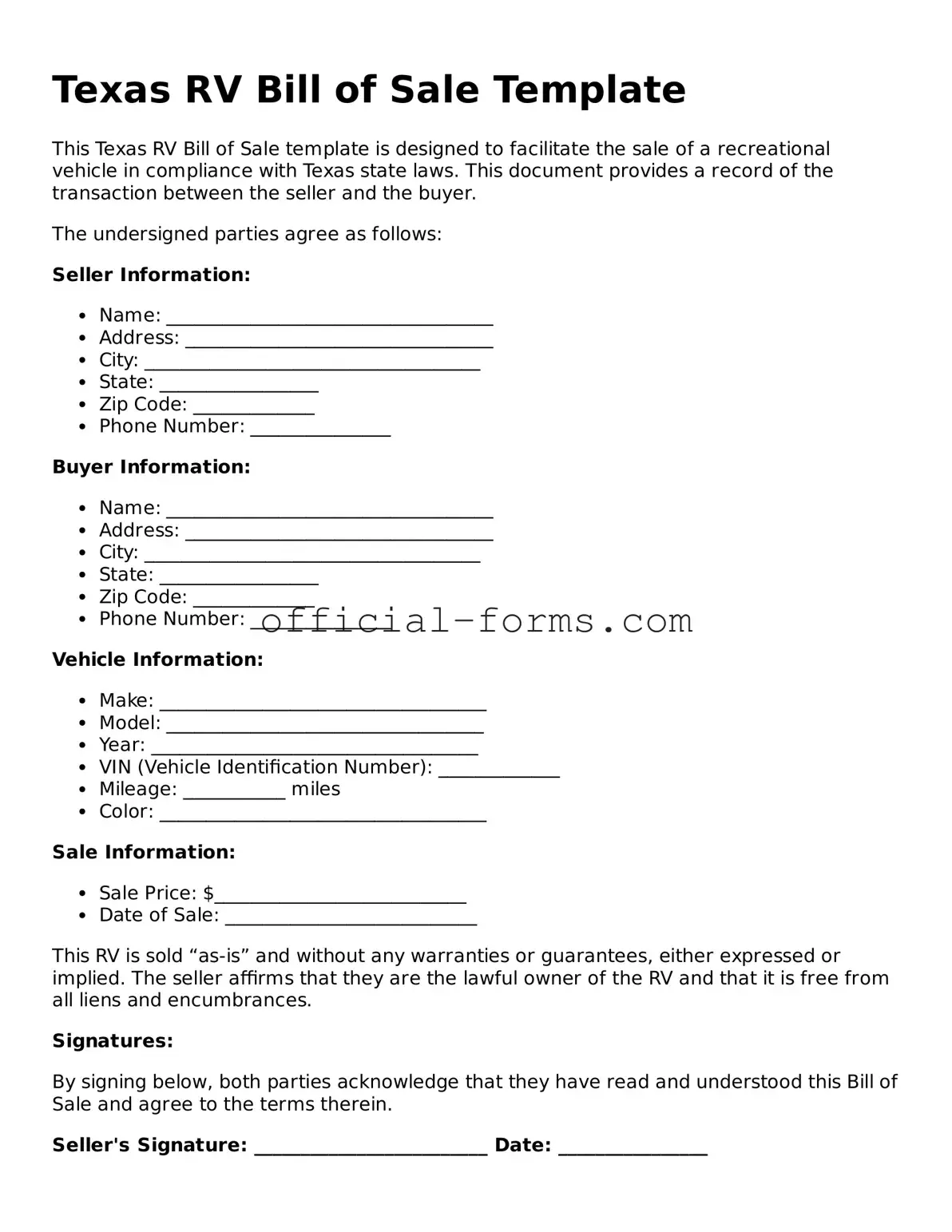Filling out the Texas RV Bill of Sale form is a crucial step in the process of buying or selling a recreational vehicle. However, many individuals make common mistakes that can lead to complications later on. Understanding these pitfalls can help ensure a smoother transaction.
One frequent error is not including all required information. The form requires specific details such as the Vehicle Identification Number (VIN), the make, model, and year of the RV, as well as the names and addresses of both the buyer and the seller. Omitting any of this information can create confusion and may even delay the registration process.
Another mistake is failing to sign the document. Both parties must sign the Bill of Sale for it to be valid. Without the necessary signatures, the form holds no legal weight. It’s also important to ensure that the signatures are dated. A date provides a timeline for the transaction, which can be important for record-keeping.
People often overlook the need for a witness or notarization. While not always required, having a witness or getting the document notarized can add an extra layer of legitimacy to the transaction. This can be particularly useful if disputes arise in the future.
Misunderstanding the payment details can lead to issues as well. The form should clearly state the purchase price and any payment terms agreed upon. If these details are vague or incorrect, it could lead to disagreements or legal complications later.
Another common mistake is not keeping a copy of the completed Bill of Sale. After signing, both the buyer and seller should retain a copy for their records. This document serves as proof of the transaction and can be essential for future reference, especially if there are questions about ownership.
Some individuals forget to check for liens on the RV before completing the sale. If the RV has outstanding loans or liens, the seller must address these issues before transferring ownership. Not doing so can lead to financial repercussions for the buyer.
Lastly, people sometimes rush through the process without reading the entire form. Taking the time to carefully review the document can help catch any errors before they become problematic. Being thorough ensures that both parties understand their rights and responsibilities.
